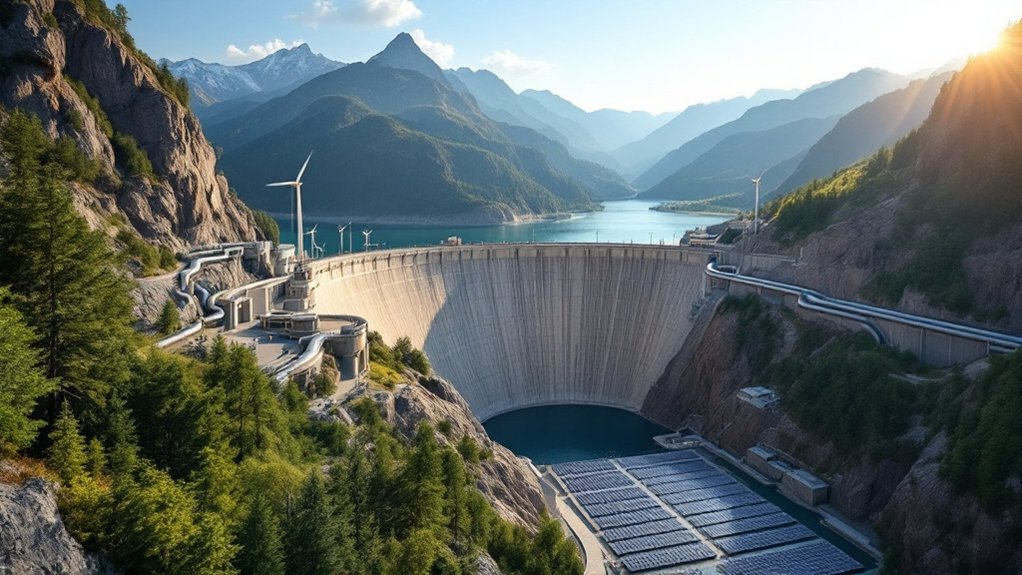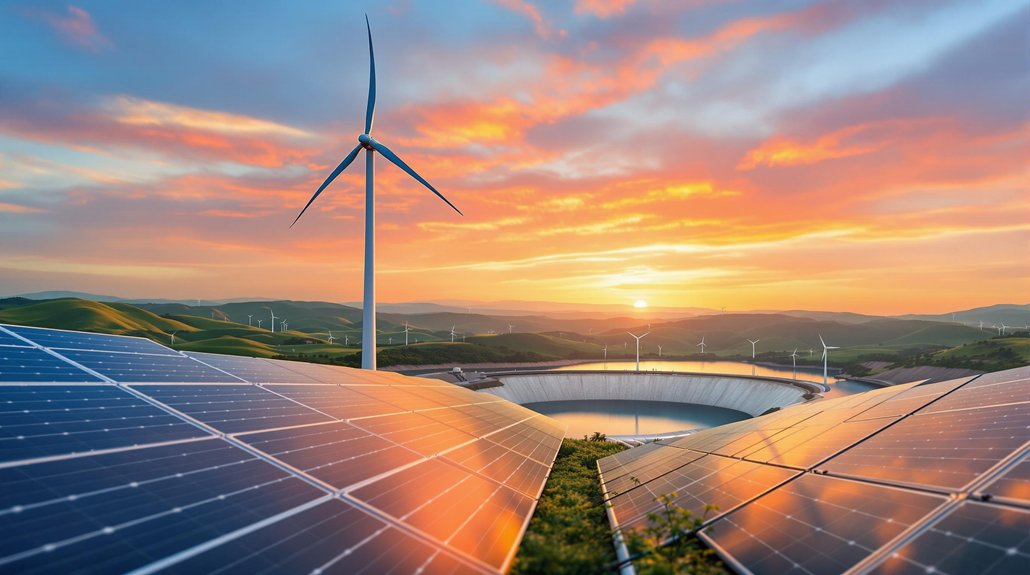Energy storage systems are the unsung heroes of renewable power. From massive pumped hydro facilities that function like giant water batteries to cutting-edge lithium-ion technology, these systems keep the lights on when the sun isn’t shining and the wind isn’t blowing. They currently store a whopping 4.67 TWh globally, with capacity expected to triple by 2030. The future of clean energy depends on these storage solutions, and they’re getting cheaper and more efficient by the day. The possibilities are just beginning to unfold.

The future of renewable energy isn’t just about generating clean power – it’s about finding clever ways to store it. And boy, do we have options. From pumping water uphill to squeezing air into underground caverns, humans have gotten pretty creative at hoarding energy for a rainy day. Or, more accurately, for when the sun isn’t shining and the wind isn’t blowing.
Pumped hydroelectric storage is the undisputed heavyweight champion of energy storage, accounting for over 90% of global capacity. It’s like having a giant water battery in the mountains. Simple concept, really – pump water uphill when you have excess power, let it flow down through turbines when you need electricity. This renewable integration helps balance the electrical grid during peak demand periods. Not exactly rocket science, but it works. The catch? You need the right geography, and not everyone has convenient mountains lying around. These systems boast a remarkable round-trip efficiency of 70-80%.
Pumped hydro dominates energy storage by turning mountains into batteries – if you’ve got them handy, that is.
Battery systems are the new kid on the block, relatively speaking. Lithium-ion batteries are everywhere these days, and their prices keep dropping – down to $151 per kilowatt-hour in 2022. That’s progress. But they’re not the only game in town. Flow batteries, sodium-sulfur, and the promising solid-state technology are all vying for a piece of the action. According to projections, storage needs will triple by 2030, from 4.67 TWh to between 11.89 and 15.72 TWh.
Some storage solutions are downright bizarre. Compressed air storage? Only two big facilities exist worldwide, and they basically use underground caves as giant pressure cookers.
Thermal storage is more straightforward – store energy as heat, often in molten salt. It’s particularly useful for solar power plants, which, let’s face it, tend to work better when the sun is actually out.
The market is booming, with projections showing global energy storage capacity hitting 1,000 gigawatt-hours by 2030. That’s a lot of stored sunshine. New technologies keep emerging – gravity-based systems that lift heavy blocks, liquid air storage, even fancy rail cars that climb hills.
It’s like an engineer’s playground out there. And with hybrid renewable projects becoming more popular, these storage systems aren’t just nice to have – they’re essential for a clean energy future.








